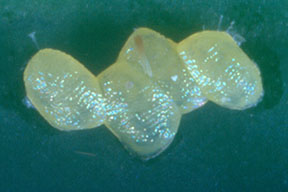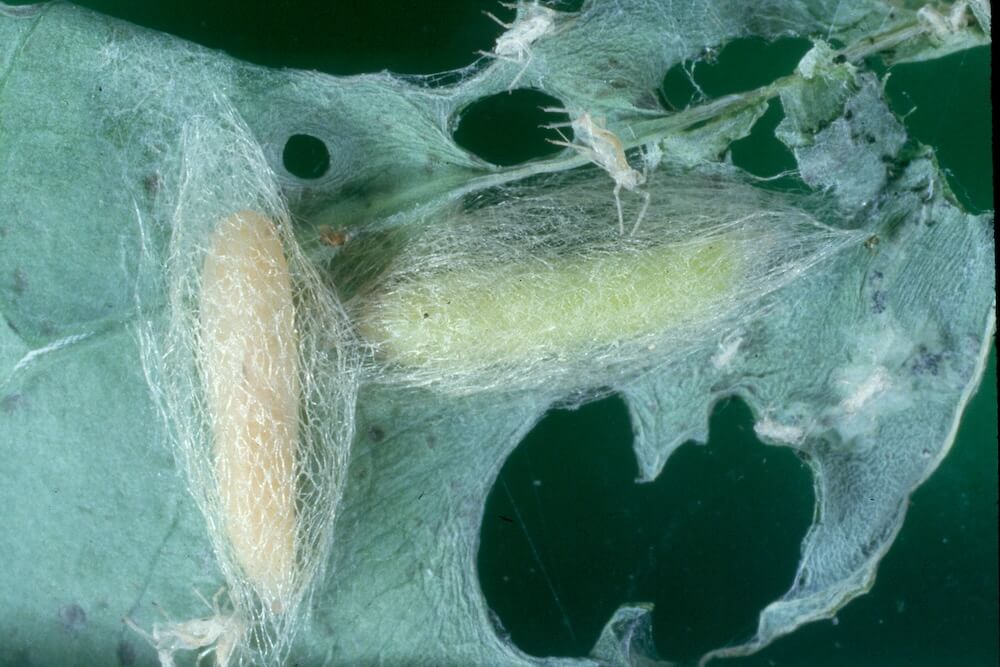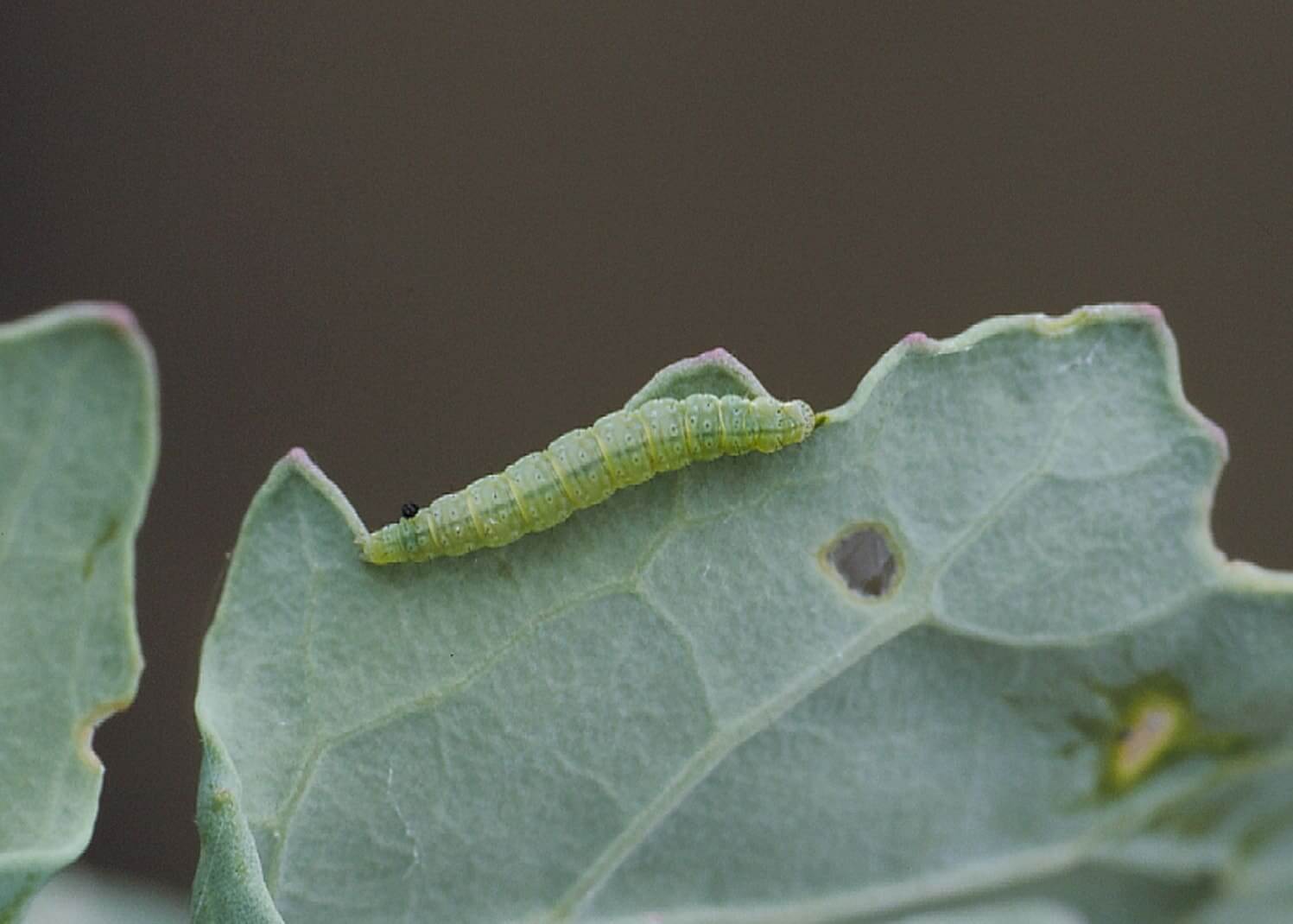Diamondback Moth
Plutella xylostella
|
Diamondback moth eggs (South Australia Research and Development Institute). |
Diamondback moth pupae (South Australia Research and Development Institute). |
|
|
|
Adult moths are 1/3 to 1/2 inch long, slender, brownish, and have a distinctive series of three pale, diamond-shaped markings on the back. Eggs are laid either singly or in small clusters on the leaves. Larvae are typically slender and yellowish green, with a forked tail. Pupae are often visible within loosely woven silken cocoons that adher to plant foliage.
The diamondback moth is a cosmopolitan pest of cruciferous crops with multiple generations per year, each completed in 3-4 weeks, depending on temperature. The moths overwinter along the Gulf Coast and the Mexican border, and migrate northward every summer. Damage to canola is not economic in most years, but highly damaging outbreak populations are possible when conditions are favorable for early generations. The larvae will consume leaves, buds, flowers, and green pods, sometime skeletonizing entire plants. Although economic populations are difficult to predict, they are most often associated with mass migrations of moths from southerly latitudes. Brassicaceous weeds such as wild radish and wild mustards serve as alternative host plants and can serve to increase populations in late summer, especially in wetter years.
Pheromone traps are available that will catch male moths and serve as an early warning that a moth migration is underway; however trap catches cannot be used to predict economic infestations. Sweep netting can be used to detect the presence of larvae, and the need for more intensive scouting. Net counts ranging from 50-100 larvae per 10 sweeps at each of 8-10 locations per field have been used as thresholds for treatment decisions. Sweep netting is not considered as reliable as manual scouting, which requires removing all plants in one square foot in at least five different places in the field. Shake the plants thoroughly into a bucket or onto a clean white surface to dislodge larvae. Threshold is considered to be a field-wide average of 10-15 larvae per square foot between vegetative stages and flowering, and 20-30 per square foot from flowering to pod set. Seedlings that have suffered >25-30 percent defoliation should also be treated, providing larvae are still visible actively feeding. Feeding damage to flowers and developing pods is usually more serious than defoliation, but leaf feeding late in vegetative stages can delay flowering and reduce yield. Drought stress will exacerbate yield losses by reducing the plants' ability to compensate for feeding damage by producing new leaves and flower buds.
Infestations of diamondback moth should not be treated before they exceed the economic threshold, as this pest has many natural enemies that can collectively prevent outbreak populations. The larvae and pupae are attacked by several species of parasitoids, and generalist predators such as lacewings, ladybeetles and predatory bugs can consume large numbers of eggs and early instar larvae. Naturally occurring fungal diseases can also cause widespread mortality in wet years, when rain droplets move spores from the soil up onto plant foliage. Spraying when moths are below threshold should be avoided, as this can kill off beneficial species and enable the remaining moth population to explode, along with other potential pests that normally remain under natural biological control. Insecticide formulations containing the Bacillus thuringiensis (Bt) delta-endotoxin are safer for beneficial species than many generic insecticides because they only become toxic in the alkaline gut of the caterpillars, which means they must be consumed by the insect. However, they tend to have short residual activity in the field because they are degraded by exposure to sunlight. Spinosad is another naturally-derived active ingredient that will be less harmful to beneficial arthropods. Insecticides applied at dusk or after dark will be more effective against adult moths that are active at night. Heavy infestations may require two applications about a week apart to provide adequate control, as eggs and pupae often escape control and the insect must eclose/emerge from these sessile stages to be susceptible to most conventional insecticides. This species is also renowned for evolving insecticide resistance, so older, generic materials may not provide control, and any repeated sprays should employ active ingredients with different modes of action.
Please refer to the most recent Canola Insect Management Guide for a list of insecticides registered for control of diamondback moth.
Page created by J.P. Michaud, 5/1/2024.


 Diamondback moth larva.
Diamondback moth larva. Adult diamondback moth.
Adult diamondback moth.